Sustainable Web Design 2025: Optimizing UX/UI and Reducing Environmental Impact

Discover sustainable web design trends for 2025. Learn how to optimize UX/UI, minimize environmental impact, and increase revenue with eco-friendly design.
Introduction to Sustainable Web Design

In the context of climate change and increasing environmental awareness, sustainable web design is no longer an option but a necessity. Sustainable Web Design is the practice of designing and developing websites with the goal of minimizing their negative environmental impact. This includes reducing carbon emissions, conserving energy, and using resources efficiently.
The importance of sustainable web design lies in the fact that websites are now an integral part of every organization's business and communication activities. However, few realize that maintaining and operating a website requires a significant amount of energy, from storing data and transmitting information to displaying it on users' devices. All of these activities contribute to global carbon emissions.
The business benefits of sustainable web design are also significant. An environmentally friendly website not only helps businesses minimize their negative impact on the planet but also enhances brand image, attracts environmentally conscious customers, and saves operating costs.
Sustainable UX/UI Design Trends in 2025

- Minimalist Design: Prioritize simple, easy-to-use interfaces and eliminate unnecessary elements. This helps reduce the amount of data that needs to be loaded, thereby saving bandwidth and energy.
- Accessibility First: Ensure that websites are accessible to everyone, including people with disabilities. This is not only a matter of ethics but also helps expand the reach of the website.
- Image and Video Optimization: Use efficient image and video compression formats such as AVIF and WebP. Compress images and videos before uploading them to the website to reduce file size and page load time.
- Use Natural Colors: Choose natural, soothing color palettes to create a friendly and comfortable feel for users.
- Focus on Readable Fonts: Use clear, readable fonts on all devices.
- Responsive Design on All Devices: Ensure that the website displays well on all types of devices, from desktops to mobile phones.
Methods to Reduce the Environmental Impact of Websites

- Choose Green Hosting: Select hosting providers that use renewable energy to power their data centers.
- PageSpeed Optimization: Improve page load speed by optimizing images, videos, code, and cache.
- Use a Content Delivery Network (CDN): Use a CDN to distribute website content to users from the nearest servers, helping to reduce page load time and bandwidth.
- Minimize the Number of Requests: Reduce the number of HTTP requests by merging CSS and JavaScript files, using CSS sprites, and inlining critical CSS.
- Optimize Code: Write clean, concise, and efficient code. Eliminate unnecessary code and use code optimization techniques.
- Optimize Cache: Use cache to store static files and reduce the number of requests to the server.
- Optimize JavaScript and CSS: Minify and compress JavaScript and CSS files to reduce file size and page load time.
Benefits of Sustainable Web Design

- Improve SEO: Page load speed is an important factor in Google's ranking algorithm. A faster website will rank higher in search results.
- Enhance User Experience: Users will have a better experience when accessing a fast and easy-to-use website.
- Increase Brand Awareness: An environmentally friendly website will help businesses build a positive brand image and attract environmentally conscious customers.
- Save Costs: Reduce bandwidth, energy, and resources needed to operate the website.
- Attract Environmentally Conscious Customers: More and more people are concerned about environmental issues and are willing to support environmentally responsible businesses.
Case Study of Successful Sustainable Websites

A prime example is the website of Patagonia, a company specializing in outdoor clothing and equipment. Patagonia has invested heavily in sustainable web design, using renewable energy to power their servers and optimizing the website to minimize its environmental impact. As a result, Patagonia has significantly reduced its carbon emissions and attracted a large number of environmentally conscious customers.
Steps to Implement Sustainable Web Design

- Assess the Current State of the Website: Analyze the performance of the current website and identify areas for improvement.
- Define Goals: Define specific goals you want to achieve through sustainable web design.
- Choose the Right Technology and Partners: Choose technologies and partners with experience in sustainable web design. You can consult **Vinawebapp.com**, a professional website design company in Da Nang, Vietnam, for advice and support.
Tools and Resources to Support Sustainable Web Design

- Website Carbon Calculator: Calculate the carbon footprint of the website.
- PageSpeed Insights: Evaluate the performance of the website and provide improvement suggestions.
- GTmetrix: Analyze page load speed and provide optimization suggestions.
- WebPageTest: Test the performance of the website on different browsers and devices.
Conclusion

Sustainable web design is not just a trend but an inevitable shift in the web industry. By applying sustainable design principles and methods, we can minimize our negative impact on the environment, enhance the user experience, and build a sustainable future for the web. Take action today to build environmentally friendly websites and contribute to a better world. If you want to build a sustainable website, contact the experts at **Vinawebapp.com** for advice and support.

